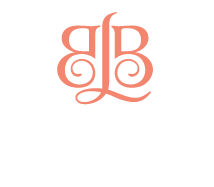One of my clients (Client A) recently came to me with a concern: Her left brow is peaked and arched much more significantly than than the other, which has a softer angle. Since this particular client has a round face, the softer angled, less-peaked brow suits her facial balance better.
I first assessed her basic natural shape by brushing the brows upward and trimming the tips (you must trim in order to avoid "messy", unruly brows). Once the hairs were in place, it was easy to see her natural shape, which ---like most of us--- had holes and gaps where hair should be, and perhaps once was. She did not have many strays, but the high arch on her left brow was a challenge. The key was to manipulate the shape with the use of brow powders. By de-emphasizing the top portion of her arch, and emphasizing her lower arch (as shown in red):
I then filled-in the "bald spots" and gaps with a combination of two brow-powder shades (you should use more than one shade to blend and create natural variations in color). Use an angled brow brush to apply the brow pigment. I prefer powder versus pencil because the ladder can look harsh and un-natural. Powders achieve a softer affect and are a fabulous must-have. Here's another example of a pigment transformation:
For this client (Client B) I obviously tweezed away the strays, then shaped and trimmed these brows. But look at the intensity of the shaded brow versus the one that's not: its like night and day. Quick Tip: Always highlight your brow bone (and eyelid) with a light shade....shimmery or not. Adding a highlight to the brow bone will only emphasize your brows, as well as your eyes, and open-up your face. This client went from Bla to VavaVoom!!
I chose NOT to tweeze more than necessary on Client A's brows for two reasons: she's used to fuller brows (although I would have preferred to thin them out just a bit). Also, brow hair may or may NOT grow back upon tweezing. Therefore, when deciding to change the shape of your brow, keep in mind, particularly for women over 40 like my client, (our biology changes as we age, and hormones affect the hair-growth cycles), that this precious hair may never grow back.
My client's gaps were prominent, so shading made a significant impact (as shown below). The red is where she needed shading to balance-out her brows. Note the blue arrow. This "tail" end of the brow is important (think of a tadpole: it has a head and a tail....a brow should simulate this). As we age, the skin stretches and goes south, including the delicate skin surrounding the eye! Brow hairs tend to grow downward in the tail area, so it is important to tweeze hairs in this areas, which lie just below the tail. Do not remove the tail entirely, you just want to manipulate it enough to give it a slight lift. Lastly, I shaded-in a tip to extend her tail (literally shading right onto the skin) to simulate the lift most women need. A little brow tweak like this can take 10 years off of your appearance. It should be noted that the brow pigments you choose should be 1-2 shades darker than the hair on your head....always err on the lighter side.
What I achieved with this client was purely cosmetic; make-up and tweezing are great, however, your end-result is limited. To truly lower that peaked brow, this client needs Botox. When injected (by a doctor or certified medical professional), Botox creates temporary paralysis of the muscle in which it's injected into. In this client's case, Botox would relax the brow and forehead muscle, taming that higher brow and keeping it level with its more behaved sister. Botox can be life changing for many, however, it is costly and temporary, therefore if you are considering this injectable, consult with your friends regarding any recommendations they may have pertaining to doctors they recommend. I am NOT an advocate of "group deals" for invasive procedures (such as injectables or laser treatments), UNLESS you have referrals from folks you know, attesting to the fabulousness of the doctor or professional.
Case in point: This client wanted to remove the vellus hair from her face, so she had laser hair removal from a professional (who was not recommended to her) that she found on the internet. The technician went laser-crazy on my client's face and accidentally removed IMPORTANT AND ESSENTIAL hairs from her brow-tail....THIS IS UNACCEPTABLE!!! My client later found out that this particular technician had very little experience with laser treatments on the face. THIS HAIR HAS NOT, AND NEVER WILL, GROW BACK! Do your homework people! Ask questions, visit facilities, and speak to patients whom have had these procedures done. Obtain referrals and recommendations from friends and professionals you trust.
A final recommendation I have for this client is to inquire about eyelid surgery aka Blepharoplasty. As I mentioned earlier, when we age, the thin skin surrounding our eye stretches and looses it's firmness, like a elastic band after multiple uses. A "lift" of the eyelid skin can open-up the eye...and coupled with Botox, can truly transform your eyes in a miraculously youthful way. It's about maintaining what you've got. You change the tires on your car and get regular tune-ups and oil changes right? What about the walls of your house? What happens when the paint chips? You scrape away the old paint, and apply a fresh coat of new, right? Your skin, your face, your body, your hair, your teeth, your nails ALL require perpetual maintenance and TLC. Take care of YOU, because a better you means a better friend, a better mom, a better lover, a better employee....take care of the magnificence of you because YOU deserve it :)
--Ciao for now xo





















